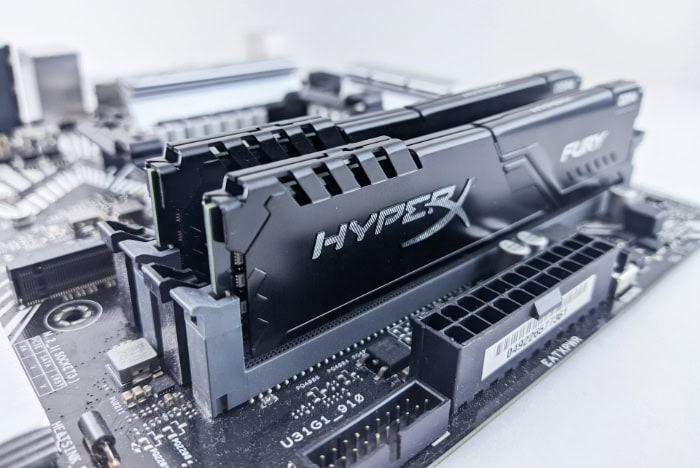DDR3 vs. DDR4 vs. DDR5 RAM: Speed, Cost, and Compatibility

Every computer user, from casual gamers to power-hungry professionals, relies on the smooth performance of their machine. At the heart of this performance lies RAM, a critical component responsible for managing data and multitasking efficiency.
With DDR3, DDR4, and DDR5 representing three generations of memory technology, each iteration has introduced advancements in speed, capacity, and energy efficiency. But what separates these generations? How do you decide which is best for your system?
Performance Comparison
Evaluating the performance of DDR3, DDR4, and DDR5 RAM involves analyzing their clock speeds, bandwidth, latency, and real-world implications for computing tasks. Each generation of DDR memory has pushed technical boundaries, offering superior speeds and data throughput, but the differences extend beyond simple numbers.
Clock Speeds and Bandwidth
Advancements in clock speeds and bandwidth have been one of the most noticeable improvements with each new generation of DDR memory. DDR3, introduced in 2007, operates with clock speeds ranging from 800 MHz up to 2133 MHz, delivering bandwidth that tops out at approximately 17 GB/s.
While suitable for older computing platforms, its performance pales in comparison to newer iterations.
DDR4 builds upon this by doubling the available speeds, operating at a range of 1600 MHz to 3600 MHz, with some higher-performance modules extending beyond that. Its bandwidth capabilities are a significant leap forward, typically ranging from 16 GB/s to 25.6 GB/s.
This makes DDR4 a solid choice for modern tasks such as gaming, content creation, and daily productivity, as it can handle larger data loads far more efficiently than DDR3.
DDR5 takes performance to an entirely new level, offering speeds starting at 4800 MHz and scaling up to 8400 MHz with the potential for even greater future overclocking capabilities. More importantly, its bandwidth has doubled compared to DDR4, ranging from 32 GB/s to 64 GB/s.
This substantial improvement is particularly beneficial for high-performance workloads such as AI applications, 4K and 8K video editing, and advanced gaming setups where every millisecond counts.
Latency and Responsiveness
Higher clock speeds and increased bandwidth are not the only factors that define performance. Latency, measured in terms of the CAS latency (Column Address Strobe), plays a significant role in overall responsiveness.
CAS latency refers to the delay between a memory module receiving a command and fulfilling that request. DDR3 tends to have lower CAS latency values, often ranging from CL9 to CL11, meaning it can respond to requests relatively quickly despite its slower speeds and bandwidth.
On the other hand, DDR4 features higher CAS latency values, such as CL16 or CL18, to accommodate its faster speeds and increased bandwidth. While this might seem like a drawback, the improvements in overall performance generally outweigh the slightly increased delay in response time.
For most users, particularly gamers and casual multitaskers, this trade-off is hardly noticeable in everyday scenarios.
DDR5, while offering blistering speeds and massive bandwidth, comes with a noticeably higher CAS latency, often starting at CL40. However, its advanced architecture compensates for this with techniques that improve efficiency and manage memory requests more effectively.
For instance, DDR5 includes a dual-channel design within a single module, drastically improving data handling and reducing potential bottlenecks. This makes it an exceptional choice for demanding workloads where speed and throughput are prioritized over the minor delays introduced by higher latency.
Real-World Performance Impact
The influence of clock speed, bandwidth, and latency becomes particularly evident during real-world activities. Gamers may find that DDR5 offers smoother frame rates in high-resolution gaming when paired with modern CPUs and GPUs, while DDR4 remains an excellent option for most gaming setups due to its balance of speed and affordability.
Professionals working with resource-intensive projects, such as data processing or media production, will benefit significantly from DDR5’s higher speeds and bandwidth, as these tasks demand extensive data movement across the system.
For general users or those working with legacy systems, DDR3 may still suffice in basic applications such as office work or internet browsing. However, its noticeably slower speeds and bandwidth make it a less viable option for more demanding scenarios.
DDR4 strikes a middle ground, offering affordability and compatibility with a wide range of modern platforms, while DDR5 represents the pinnacle of performance for cutting-edge systems.
Technical Specifications

The technical specifications of RAM go beyond just performance numbers, as advancements in power efficiency, capacity, and architectural design have greatly enhanced its usability and reliability. Modern systems demand memory modules that can handle larger workloads with minimal energy consumption while ensuring long-term stability.
Comparing DDR3, DDR4, and DDR5 reveals substantial improvements in these areas, with each generation offering tailored solutions for different use cases.
Power Efficiency
Reducing power consumption has been a major focus with each evolution of DDR memory. DDR3, despite its solid performance during its time, operates at a relatively higher voltage of 1.5V.
This results in more heat generation and less energy efficiency, which can become noticeable in energy-conscious environments or when using multiple modules in a high-performance system.
DDR4 introduced a lower operating voltage of 1.2V, representing a significant reduction in power consumption compared to DDR3. This improvement not only helps minimize heat output but also allows systems to remain cooler during prolonged workloads.
The reduced voltage translates into noticeable energy savings, especially in systems that rely on large amounts of RAM for sustained operation.
DDR5 takes power efficiency even further by lowering the operating voltage to 1.1V. This reduction, while seemingly small, has a substantial impact in systems designed for demanding workloads, as energy savings accumulate over time.
Additionally, DDR5 introduces features such as power management integrated circuits (PMICs) directly on the module, enabling better regulation of power delivery and further improving efficiency. For users building cutting-edge systems, DDR5's reduced power requirements combined with enhanced performance make it a formidable choice.
Capacity and Architecture
The capacity and architectural design of RAM have played a significant role in meeting the demands of modern computing. DDR3 modules are limited to a maximum size of 16GB per module, which was sufficient for its era but is restrictive for many current workloads.
Paired with its less advanced architecture, DDR3 struggles to keep up with the multitasking and data-intensive tasks required in today’s computing environments.
DDR4, on the other hand, increased maximum module sizes significantly, supporting up to 64GB per stick. This jump in capacity has made DDR4 a popular option for gaming systems, content creation machines, and professional workstations.
Its architecture also introduced improvements in internal organization, allowing for faster and more efficient data handling.
DDR5 raises the bar further by enabling modules to scale up to 128GB per stick, doubling the capacity of DDR4. This unprecedented capability is ideal for systems requiring vast amounts of memory, such as servers, AI workloads, and high-performance computing setups.
Moreover, DDR5 includes a dual-channel architecture within each module, allowing it to process two separate streams of data simultaneously. This design significantly boosts memory bandwidth and efficiency, empowering DDR5 to handle modern applications with ease.
Another standout feature of DDR5 is its on-die ECC (Error Correction Code), which enhances stability by automatically detecting and correcting single-bit memory errors. This feature is especially beneficial for mission-critical applications where data integrity cannot be compromised.
Practical Implications
The combination of improved power efficiency, higher capacities, and advanced architecture allows DDR5 to stand out as the most forward-thinking memory technology available. Its ability to handle larger datasets, consume less power, and maintain data integrity positions it as the memory of choice for cutting-edge systems.
DDR4 remains a strong contender for most modern builds due to its balance of performance and capacity, while DDR3 is typically reserved for older platforms or basic use cases. Each generation offers unique advantages based on the specific needs of the user, but the technical advancements seen in DDR5 mark a significant step forward in memory technology.
Compatibility and Hardware Requirements

RAM compatibility is a critical factor when assembling or upgrading a computer system. Selecting the wrong type of memory can lead to hardware conflicts, as different generations of DDR memory are designed to function with specific platforms.
Factors such as the physical design of the modules, motherboard compatibility, and CPU requirements play an essential role in determining which RAM is suitable for a particular system.
Physical Design
Each generation of DDR RAM features distinct physical characteristics that prevent interchangeable use across platforms. The position of the notch on the memory module is one of the most noticeable differences.
This notch ensures that DDR3, DDR4, and DDR5 can only be installed in compatible motherboards, making it impossible to insert a module into an unsupported slot. For example, a DDR4 module will not fit into a DDR3 DIMM slot due to the differently positioned notch.
This design safeguard prevents accidental damage to the RAM or motherboard by ensuring that users only install the correct memory type.
Additionally, each generation has slight variations in the number of pins on the module, further ensuring compatibility limitations. DDR3 modules typically have 240 pins, while DDR4 features 288 pins, and DDR5 retains the 288-pin layout but with a modified notch positioning.
As a result, users must choose RAM that matches their motherboard specifications.
Motherboard and CPU Support
Hardware support for RAM is tightly tied to the motherboard and CPU platform. DDR3 remains limited to much older systems, such as Intel's Haswell line of processors or AMD's FX-series chips.
These platforms have long since been replaced by newer generations, but DDR3 still offers benefits for users maintaining legacy systems or performing basic computing tasks.
DDR4, on the other hand, is widely adopted and supported by modern platforms, offering compatibility with a broad range of processors from both AMD and Intel. For example, AMD's Ryzen 5000 series and Intel's 12th Gen processors both pair effectively with DDR4, making it a versatile option for gaming rigs, content creation setups, and general-purpose builds.
DDR4's widespread adoption ensures compatibility with many existing motherboards, making it a practical choice for most users.
DDR5 requires the latest hardware platforms to operate correctly. Since it became available, manufacturers have introduced motherboards and CPUs designed specifically for DDR5, such as AMD's AM5 platform and Intel's Z690 or Z790 chipsets.
These cutting-edge platforms ensure that DDR5 operates at its full potential, taking advantage of increased bandwidth, higher speeds, and improved efficiency. However, systems built to support DDR5 are often more expensive, reflecting the advanced capabilities that the memory offers.
Cost vs. Use Case Suitability

The cost of RAM varies significantly depending on the generation, performance capabilities, and intended use case. Choosing the right type of memory requires balancing price with the demands of the system and its applications.
DDR3, DDR4, and DDR5 cater to different segments of users, ranging from budget-focused setups to high-end systems built for intensive workloads.
Pricing Trends
DDR3 remains the most affordable option on the market. Its budget-friendly nature is ideal for users maintaining older systems where cutting-edge performance is unnecessary.
Modules can be purchased at a fraction of the cost of newer generations, making it an accessible choice for those performing basic tasks such as word processing, web browsing, or casual media playback. However, its lower performance metrics limit its suitability for more demanding applications.
DDR4 occupies the mid-range pricing segment, offering an excellent balance between affordability and performance. As it has become the standard for modern systems, DDR4 modules are competitively priced and readily available.
Users building gaming PCs, working with creative software, or engaging in multitasking will find DDR4 to be both powerful and cost-effective. While slightly more expensive than DDR3, its benefits in speed, capacity, and compatibility make it a worthwhile investment for most builds.
DDR5, being the newest and most advanced generation of RAM, commands a premium price. Its higher costs reflect the cutting-edge technology it introduces, including faster speeds, increased bandwidth, and architectural improvements such as on-die error correction.
DDR5 prices may discourage budget-conscious users, but it appeals to those seeking maximum performance for high-end systems. As adoption increases and production scales, its pricing is expected to gradually decline, though it remains a luxury choice for now.
Ideal Applications
DDR3 is primarily suited for legacy systems, offering enough performance for simple tasks without requiring extensive investment. Office environments relying on older hardware or home users with aging systems can benefit from DDR3's affordability and reliability for basic workloads.
However, those requiring modern software or faster response times are likely to find DDR3 unsuitable for their needs.
DDR4 strikes an excellent balance between price and capability, making it ideal for a broad range of applications. Gaming enthusiasts benefit from its ability to handle modern titles smoothly, while content creators can take advantage of its support for applications like video editing and graphic design.
Mainstream users building general-purpose systems will appreciate DDR4's versatility in handling multitasking, productivity software, and entertainment.
DDR5 is the preferred option for cutting-edge builds where performance is paramount. Systems built for AI research, advanced simulations, or high-resolution video editing thrive with DDR5 due to its increased memory bandwidth and large module sizes.
High-end gaming rigs also benefit from DDR5, particularly when paired with the latest chipsets and graphics cards. While its cost may limit its accessibility, professionals and enthusiasts seeking future-proof hardware will find DDR5 to be an exceptional choice.
Matching RAM generation to the intended use case ensures systems operate efficiently while staying within budget. DDR3 provides affordable functionality for older setups, DDR4 covers the needs of most mainstream users, and DDR5 delivers elite-level performance for those requiring state-of-the-art computing capabilities.
Conclusion
Choosing between DDR3, DDR4, and DDR5 RAM depends on understanding the trade-offs associated with each generation and aligning them with your system’s requirements. DDR3, while cost-effective, is now largely confined to legacy systems due to its lower speeds, limited capacity, and lack of support for modern technologies.
It remains an option for basic computing tasks but struggles to meet the demands of today’s software and hardware standards.
DDR4 offers a versatile middle ground with improved performance, higher capacities, and extensive compatibility with current platforms. It is a reliable choice for gaming, content creation, and mainstream builds, providing an excellent balance between affordability and capability.
For the majority of users, DDR4 remains a practical solution that meets the needs of modern systems without breaking the budget.
DDR5, as the latest generation, delivers exceptional speeds, massive bandwidth, and advanced features like on-die error correction and dual-channel architecture within a module. It excels in high-end applications such as AI workloads, professional 4K/8K video production, and cutting-edge gaming rigs.
However, its higher price tag and limited compatibility with older systems make it better suited for enthusiasts and professionals looking to future-proof their setups.
Balancing budget, performance needs, and future requirements is essential when selecting the right RAM. DDR3 serves older systems well at an affordable price, DDR4 continues to be the go-to choice for most users, and DDR5 represents the pinnacle of performance for those ready to invest in the latest technology.


